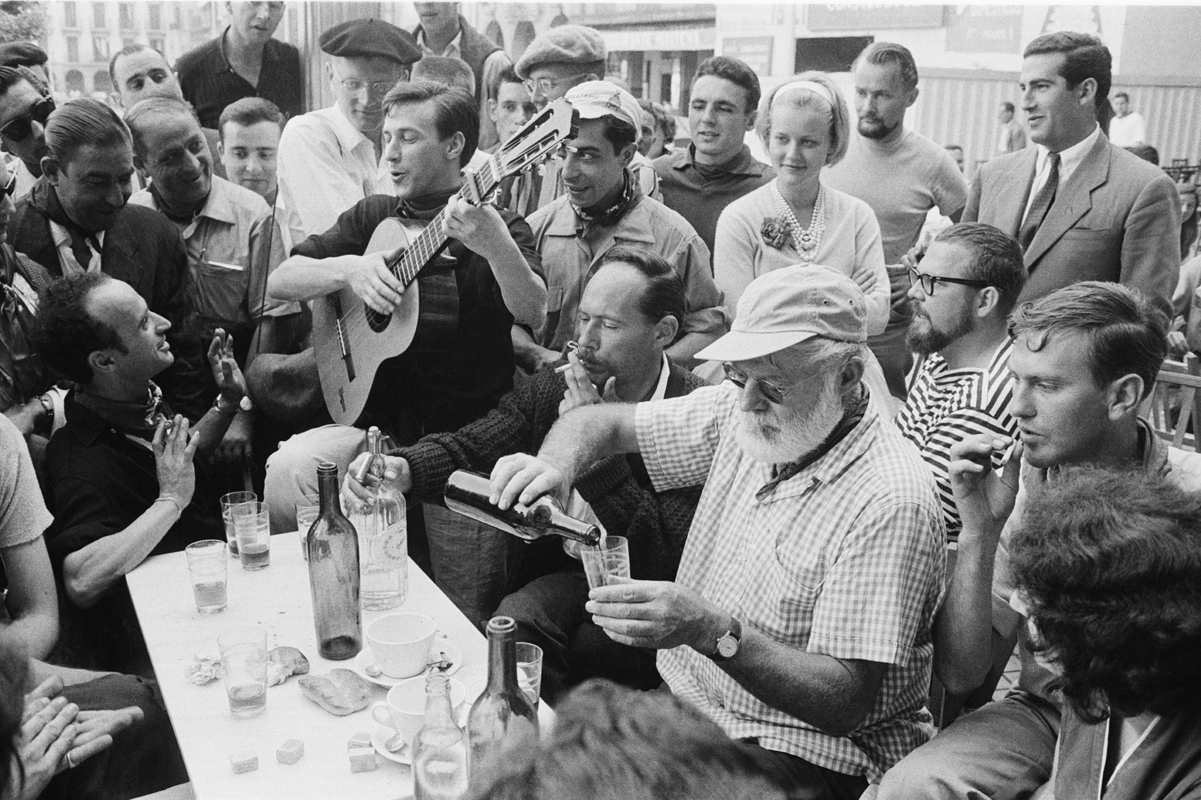(Photo: Paris Match, 1959)
The Kennedy Presidential Library recently received a trove
of photos of Ernest Hemingway’s last summer in Spain. I was in Spain that
summer. We were both in Pamplona for the running of the bulls. We sat in the
same plaza. We drank at the same cafe. And yet--
It was 1959 and I had just finished a glorious junior year
abroad, where I woke up every morning and said to myself, “I’m still young and
I’m still in Paris!”
When school let out my mother expected me to come home to
our leafy Chicago suburb, but that was the last place on earth I wanted to be
after the freedom of a student abroad. “I need
to learn Spanish,” I wrote. There was a language school in Palma de
Majorca. In those days you didn't make transatlantic flights or calls
promiscuously The dollar was strong.
Spain was cheap. My mother gave a
reluctant okay.
I’m sure there were planes and trains, but what was the fun
of that? Someone told me about a girl who’d just graduated from Northwestern
and who was traveling in Spain. I met her and suggested we go together.
“I’m traveling with Ernest,” she said cooly. She didn’t need
to say his last name. She did not invite me to join them. I assumed they would
be alone. I was wrong.
I met a couple of girls at the American Express Office in
Paris, who had a car and wanted someone to share the expenses. We drove down
the coast of France and found a little hotel in San Sebastian. It was there we
heard about the Festival of San Fermin—the fiesta Hemingway wrote about in The Sun Also Rises. The next morning I
bought a copy of the book and we drove to Pamplona.
It was hot and dusty, but the Plaza del Castillo was filled
with young people from all over the world. The excitement was palpable. I did
something you only do when you’re young and on an adventure. I said, “I’m
staying.” The girls agreed to bring my things the next day, but I didn’t even
have a place to sleep, where they could drop off my suitcase.
I saw Hemingway a few tables away, but he was surrounded and
I was shy. My first failed chance to meet the great writer wouldn’t happen
until the next day, thanks to a student from Stanford named Robby, who had just
arrived and was set on running with the bulls the next morning. These are the
fighting bulls they ran through the streets to the bullring. I didn’t know
much, but I did know men were gored every year.
“Why don’t you watch the bulls tomorrow and run with them
the next day?” This seemed sensible to
me, but Robby was set on running the next morning at 7am.
We stayed up all night, drinking raw red Spanish wine in the
darkened plaza. I didn’t have a hotel room and Robby was too gallant to leave
me alone. Around 6 am he asked me to
keep his passport, tickets home, and traveler’s checks. Then he headed to the
place where the runners congregated.
I went to the bullring to watch. This is what I remember.
The first bunch of men loped into the ring, followed by men running faster and
faster, then sprinting as the bulls came through the tunnel. After them came another group of lopers
followed by runners going faster and faster, then sprinting. I spotted Robby
sprinting into the ring, saw him stop, and turn. And then I watched with horror
as he ran against the crowd, back through the tunnel just as the bulls were
entering. My heart was pounding as I
waited. He never returned.
I went back to our table in the plaza. The smell of café con
leche and sugary churros, filled the air, but I couldn’t eat. The girls I had
been traveling with must have found me there, because I had my suitcase when I
left Pamplona, but I have no memory of seeing them again. I don’t remember
anything except feeling sick with dread and not knowing what to do. I thought I
should search the hospitals, but what hospitals and where were they? I knew no
Spanish. No police were in sight.
Hemingway arrived around noon with his entourage, laughing,
joking, and ordering wine and Cuba Libres. I told myself I should break in to
their revelry and tell them about Robby.
Surely, they’d know what to do. But just as I was working up the
courage, Robby arrived, looking pale and near tears. “I lost my passport, my
ticket home, and all my traveler’s checks,” he said. “I’ve been to the police
and retraced my route, but—.”
I took his passport, ticket, and traveler’s checks out of my
purse and handed them to him. In the excitement of running with the bulls, he’d
forgotten he’d given them to me. He stood in the square, raised his wineskin,
and poured red wine over his head.
Just then Ernest Hemingway got up from his table. Robby
skipped over and asked him to join us for a drink. I was close enough to hear
Hemingway thank him, but say with a sparkle in his eye, “I’m going on a picnic
with her.”
I thought he pointed to the girl from Northwestern, but it
could have been 19-year-old Valerie Danby-Smith, the girl with the creamy
complexion and wild dark hair, who became his secretary, married his son, and
in 2004 wrote her memoir Running with the
Bulls. Whoever she was, he seemed as excited as a teenage boy on a first
date.
I would get another chance to almost meet him the next
morning.
TO BE CONTINUED…


